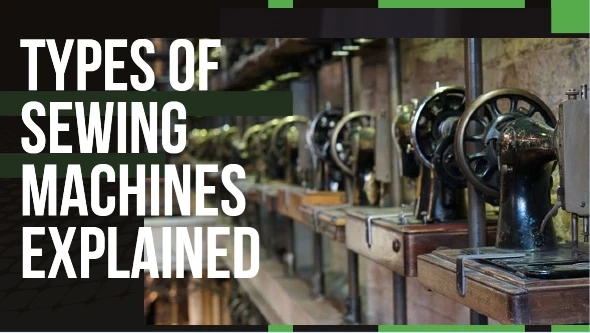In a broad sense of home improvement tools, sewing machines can be considered a must at home. The fact that sewing can be easily learned and then employed to do a lot of small to big tasks yourself such as fixing loose or tight clothes and much more. You could become a DIY king or queen because of the mastery in this line.
The new generation of sewing machines has grown out of the primitive world and is now packed with the latest features. On top of that, they are very easy to operate for a variety of functions. For a keen novice, most of the commands and functions can be learned gradually by only reading the manual.
At a fundamental level, sewing machines are divided into categories based on their functionality. They can also be divided into the range of features they are carrying such as sewing, embroidery, and quilting.
At the slight cost of over-simplification, you can compile sewing machines into five broad categories based on their functionality and operations:
1. Mechanical/ Domestic Sewing Machines
2. Electronic Sewing Machines
3. Automated Or Computerized Sewing Machines
4. Over-Lock Sewing Machine Or Serger
5. Embroidery Machine
Now, we will discuss each of the machines in the detail. This will help you pick the one that is most suitable for your work.
1. Mechanical/ Domestic Sewing Machines
First off, it is a mechanical or domestic machine. It is also known as a tailoring machine/treadle sewing machine/domestic sewing machine. If you have seen one in someone’s house or in your own, there are healthy chances that it was that one.
The basic premise of this machine is that settings are set by users manually. So, they are most suitable for beginners who want to take things slowly and want to graduate from basics to advance. They are primitive “Silai Machines” that are very easy to repair, operate, and get due to being inexpensive.
When compared to modern models of sewing machines, they look like dinosaurs of the past. They have limited features that make them affordable and easy to learn.
Right out of the box, they have presser feet, adjustable stitch length, bottom loading Bobbin, adjustable Tension, single (straight and reverse) stitch, but there are many newer models that offer more than one stitch pattern for versatility.
These mechanical or domestic sewing machines are not suited to stitch thick fabric such as denim or leather. Due to the lack of buffers, there are many days that you have to thread the needle over and over again. This usually bothers novices a lot. In the case of treathe dle and hand-operated machines, you will get only one straight and forward stitch capability.
Body Type
The body type of mechanical or domestic sewing machines depends on the manufacturing company and the model of the machine. In general, they come in black color and made of aluminum. These machines can be stand or table-based, so you have both options to pick that best suit your hand. In many models where there is treadle or handle based operation, it requires human efforts to operate the machine.
These days, the manual apparatus of sewing machines can be replaced with an electric motor. In workspace ergonomics, the treadle machine covers more space, and is hard to move because of massive weight.
Features
In the latest models of domestic sewing machines, you will find some modern features installed in the body such as small LED screens to choose stitch patterns. As compared to some advanced machines for experts, they are easy to handle because they do not require any user experience and expertise. This makes them the best sewing machines for beginners or household purpose tailors. They are perfect for simple, straightforward stitching but you cannot carry out decorative craftings like embroidery or other ornamental work on these machines. The prices of these machines range from $50 to $200, based on functithe onality and availability of features.
2. Electronic Sewing Machines
These are the direct successors to mechanical or domestic sewing machines, so they have naturally more features than their ancestors. In essence, they are a combination of both mechanical and computerized sewing machines. In the recent surge of DIY crafting trend all around the world, these can come in handy for sewing and decorative crafting because of the number of features loaded in them.
Features
Designed for expert sewing and stitching, they are loaded with a variety of features. They are efficient to get the work done in a seamless manner. They are light in weight, with compact sizes, and some of the models of LED screens to choose sewing and stitching patterns easily.
Read more about Sewing



